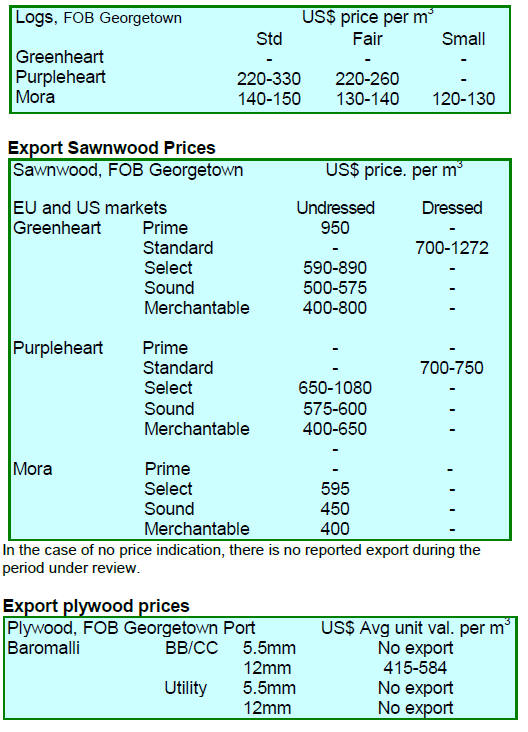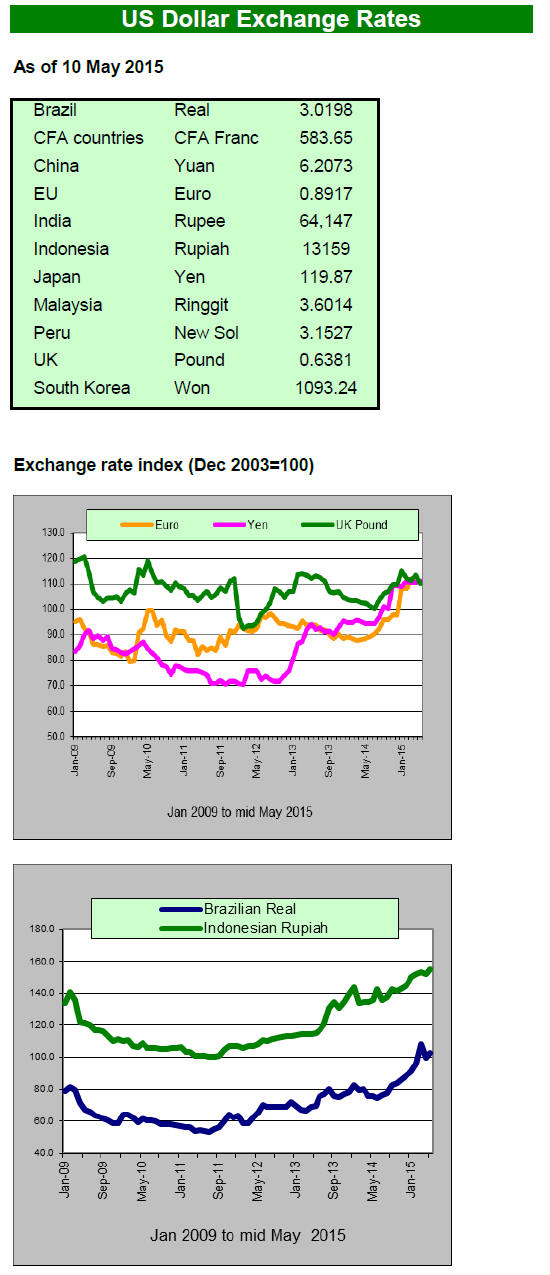2. GHANA
Exports 27% lower in third quarter 2014
Contracts covering export shipments of 120,588 cu.m
were approved by the Timber Industry Development
Division (TIDD) of the Forestry Commission during the
fourth quarter of 2014. This represented a decline of 27%
when compared to the volume approved for export in the
third quarter of the same year.
The main reason behind the decline in fourth quarter
exports was the sharp fall in teak logs/billet exports where
a 52% fall was recorded.
Exports of plywood to the neighbouring West African
countries and other international markets fell 9% and 20%
respectively compared to the third quarter.
An analysis of fourth quarter contracts showed that
exports of all categories of wood products (primary,
secondary and tertiary) fell from the previous quarter. The
table below shows the comparative analysis;

For 2014 exports of primary products accounted for
approximately 24% of all exports while secondary and
tertiary products accounted for 74% and 2% respectively.
Neighbouring countries the main market for plywood
West African markets continue to be the major
destinations for Ghana‟s plywood. Of the 12,058 cu.m
approved for export in 2014, 97% was destined for
countries in the West Africna sub region with Nigeria
being the major importer.
Almost all the tertiary products, sliced veneer and kiln
dried lumber were shipped to European markets.
The United States continued to be an important market
especially for mahogany and cedrella sawnwood and
rotary peeled veneer. The Middle East and Egyptian
markets emerged as major destinations for backing grade
veneer. Little interest has been generated for any product
other than teak sawnwood and logs and gmelina logs in
India.
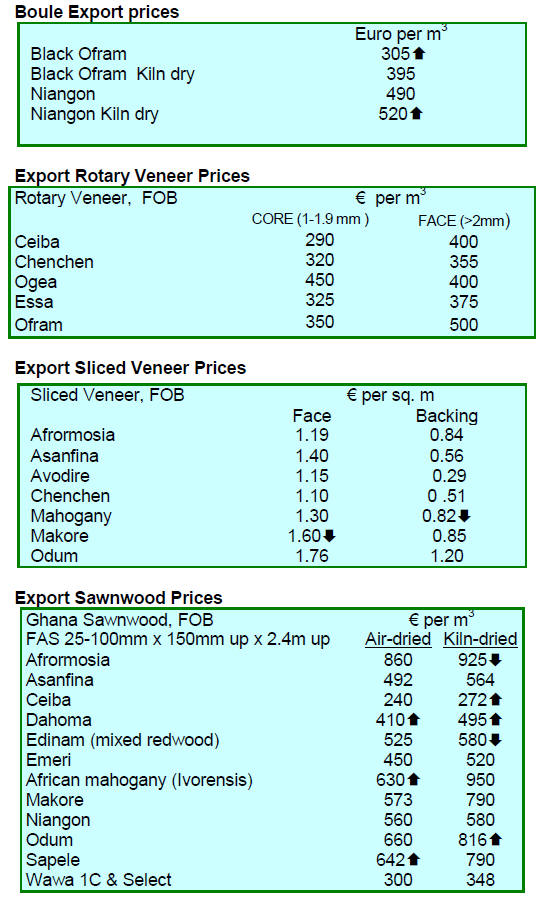
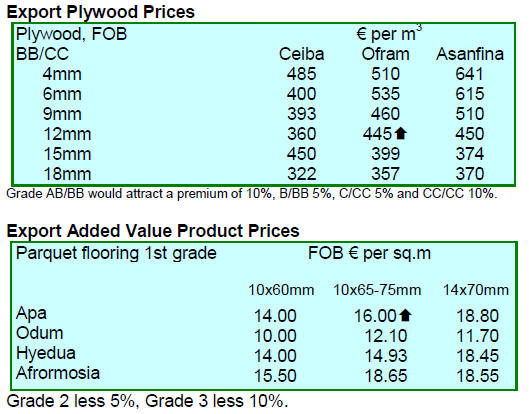
3. MALAYSIA
National ˇ®heritage treeˇ± scheme underway
The National Landscape Department (NLD) of Malaysia‟s
Ministry of Urban Wellbeing, Housing and Local
Government has published a list of national heritage trees
in order to draw attention to unique and ancient individual
trees in the country.
The concept of heritage trees emerged after a property
development company was fined RM 966,000 (approx.
US$270,000) for the unauthorised felling of trees on a
housing development site.
The NLD surveyed parks, roadsides, car parks and
riversides in 28 local authority urban areas to identify
heritage trees. To be classified as a heritage tree the tree
should have a special value in terms of natural beauty or
contribute to the landscape‟s aesthetics. Rare and
endangered tree species are also labelled heritage trees.
The listed trees have been assigned a price to deter felling
with the most expensive tree in the country, a Pokok Ara
(Ficus benjimina) in the state of Pahang, being valued at
over RM1.5 million (approx. US$400,000).
The NLD continues to work with local councils to educate
the public on the importance and value of heritage trees, as
well as developing an online map of the trees.
Unions fail to get minimum wage increased
Despite trade union Labour Day calls for an increase in the
minimum wage the prime Minister has said that for now
the minimum wage must as it is. The PM pointed out that
it was only a year and a half ago that the rate was
increased.
The minimum wage policy in Malaysia decided in 2013
was fully implemented in January last year and was set at
RM900 per month for workers in Peninsula Malaysia and
RM800 for those in Sabah and Sarawak. The minimum
wage must be reviewed once in two years under the
Minimum Wage Order 2012.
However the Malaysian PM proposed the country‟s
Social
Security Organisation‟s (Socso) protection scheme,
presently covering those with a monthly income of
RM3,000 (approx. US$ 835) and below, be extended to all
workers in the private sector regardless of their salaries.
If implemented this would increase the number of
employees protected under Socso by 500,000 from the
present six million.
4. INDONESIA
Moratorium on forest clearing to be
extended and
strengthened
The current moratorium on new plantation concessions
involving the clearing of primary forests and peat land
expired on 13 May. However, prior to the expiration the
Environment and Forestry Ministry indicated not only
would it be extended but also strengthened.
Secretary-Genera,l Hadi Daryanto, in an interview
reported by the Jakarta Post, said the new regulations will
be more inclusive and target specific institutions such as
the Public Works and Housing Ministry, the Agriculture
Ministry and the National Land Agency.
In related news, the Executive Director of the Riau chapter
of the Indonesian Forum for the Environment (Walhi), has
called for more drastic action and demands the conduct of
an audit and evaluation of concessions granted before a
moratorium.
This call comes after it was discovered that forest clearing
permits in the forests of Riau have been over-issued since
2009.
Ministry criticised for no public disclosure of
documents
The Indonesian Environment and Forestry Ministry is
defending its decision not to release what it deems to be
confidential documents but which several civil society
organizations say are key to its mandated role to monitor
the performance of the forestry sector.
Forest Watch Indonesia (FWI) said it had been denied
access to four documents which they claim are essential if
FWI is to monitor the implementation of the domestic
timber legality verification system (SVLK).
The four types of documents requested by FWI are the
Timber Usage Working Plan (RKUPHHK), the Annual
Timber Usage Working Plan (RKTUPHHK), the
Industrial Material Fulfillment Plan (RPBBI) and the
Timber Exploitation Permits (IPK).
Q1 GDP growth target missed
Indonesia‟s year on year GDP growth in the first quarter
of this year was 4.7%, slightly worse than forecast. As a
result analysts have raised concerns about growth
prospects for the rest of the year.
The poor first quarter results were largely because of a
drop in export earnings, a reflection of a sluggish global
economy and low commodity prices.
On the domestic front, consumers are bearing the brunt of
high interest rates and businesses are holding back on
expansion plans. When slow government spending is
added to the mix, prospects for high growth begin to fade.
Going forward, there are further risks to growth from
weaker economic growth in China and Japan this year,
Indonesia‟s key trading partners. China and Japan account
for about 20% of Indonesia‟s non-oil and gas exports.

5. MYANMAR
New faces in Myanmar Timber Merchants
Association
The Myanmar Timber Merchants Association (MTMA)
has elected new executive committee members for 2015-
16.
The President is Dr. Sein Win, the Vice President is U Tin
Oo and the Secretary is U Kyaw Kyaw Win. Most of the
previous committee members are not included in the new
executive.
Timber industry circles keenly await news on
developments and hope that the FLEGT and certification
processes continue uninterrupted.
Timber export earnings decline
The domestic press, Eleven Media, quoting a Ministry of
Commerce source, says that Myanmar earned US$94
million from wood product exports in fiscal year 2014-15,
down significantly from the previous year.
Severe penalties for timber smuggling planned
Harsher penalties for timber smuggling are being
considered in a revised version of the Forest Law. The
changes are being made in response to the rise in illegal
felling and smuggling.
The indications are that penalties under the law will be
much harsher than in the current law such that the
previous one year jail term will be extended to five years.
The amendments to the law will cover jail sentences and
the level of fines.
April log sales
The following timber was sold by the Myanma Timber
Enterprise by tender on 27 April 2015. The volume of logs
is expressed in hoppus tons (H.tons) and the volume of
conversions or sawn teak including hewn timber are
shown in cubic tons (C.tons).
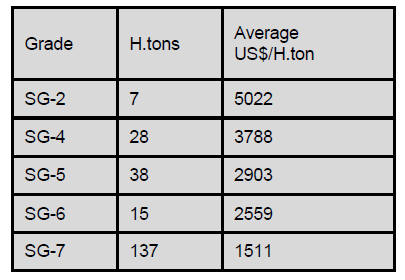
Myanmar Kyat weakens against the dollar
The US dollar strengthened against the Myanmar Kyat in
recent weeks. The Kyat was trading at MMK1020 per US
dollar during the first week of April but it ended the month
at MMK1098 and continued to weaken to around
MMK1100 in mid-May.
6.
INDIA
Rising list prices disguise heavy
discounts on offer in
housing market
According to figures from the property research firm
Liases Foras, there was over 800 million sq ft of unsold
housing stock at the end of 2014 and that sales in the final
quarter of 2014 fell 8%.
While list prices for new homes rose in the final quarter of
2014 this hides the heavy discounts on offer from builders
who are anxious to generate cash flow in the dull market
conditions.
Yashwant Dalal, President of the Estate Agents
Association of India, says even with the higher incentives
being offered to brokers, the problem is the lack of buyers.
Analysts anticipate a rise in demand only when interest
rates on home loans come down.
It has been estimated that, given the completed stock of
new homes, even with a 1% fall in interest rates it will
take around 40 months for this stock to be cleared at
current rates of sales.
Property Fair in Abu Dhabi
In related news an India Property Fest will be held in Abu
Dhabi 29-30 May. Abu Dhabi has a large Indian expatriate
population. Builders from India will present their
selecetion of residential and commercial properties.
Representatives from financial institutions will also be
present to offer financing. In a press release the organisers
offer some insights into the Indian housing market:
• a dynamic and organised sector with a long-term
road map for growth
• the sector is the second largest employer after
agriculture
• the sector is set to grow at 30% over the next decade
• there is firm demand for office space in India‟s
leading urban and semi-urban centres
• the market is expected to grow to US$180 billion
by 2020
Bengaluru, Chennai, Hyderabad, Mangaluru, Mumbai,
New Delhi, Goa, Kerala and Pune are some of the most
favoured locations for investment.
For more see
http://www.daijiworld.com/news/news_disp.asp?n_id=317
372
Teak sales in Central India forest depots
Log auctions were held at Timarni, Khirakia, Narmada
Nagar, Ashapur and other depots in Central India and sales
were brisk as the quality of the logs was good and millers
were active in the market. Around 3,000 cubic metres of
logs were successfully auctioned.
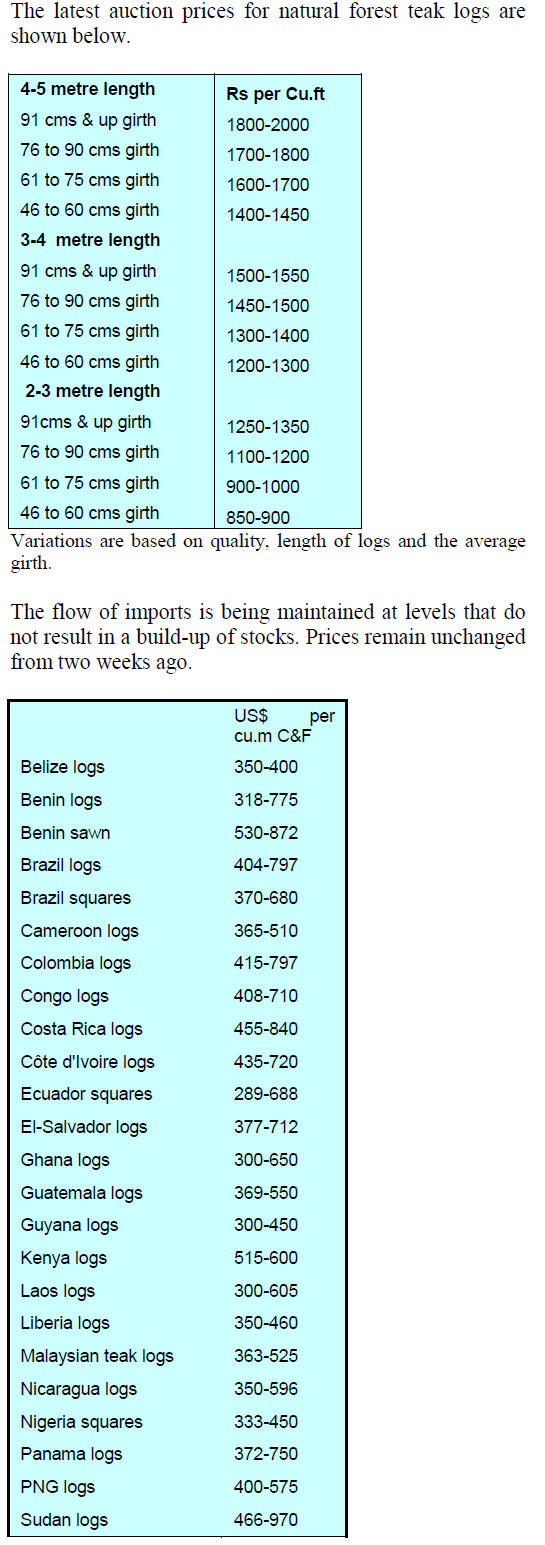

Plywood and laminates market review
US based Research and Markets (R&M) recently
announced the release of a market report ˇ°Indian Plywood
and Laminates Market: Trends and Opportunities 2015-
2019ˇ±
See
http://www.researchandmarkets.com/research/g5lclq/indian_plywood
This report offers an insight into the plywood and
laminates market in India. The press release from R&M
says ˇ°The report assesses the market sizing and growth of
the Indian plywood and laminates and analyses various
market segments and major end users.
The report also discusses key factors driving growth in the
sector, major trends and challenges faced by
manufacturers of plywood and laminates.ˇ±
In introducing the report R&M state ˇ°the market for
plywood and laminates is mainly driven by increasing
demand from housing market. The demand has increased
due to growing significance of new construction industry.
Plywood and laminates have become an indispensable part
of big and evolving markets like real-estate market,
furniture market, modular kitchen market as well as the
flooring market. The increased demand in these markets
triggers the demand in the plywood and laminates market.
Apart from this, increasing urban population, rising per
capita income and a gradual shift towards non-food
industry are other key factors driving the growth of
plywood and laminates industry in India.
Further, the implementation of Goods and Services Tax
(GST) in the near future will provide an impetus to
plywood and laminate industry.ˇ±

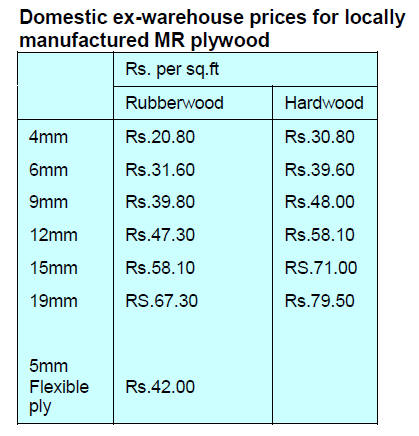
7.
BRAZIL
Amazon forest concessions approved
40 year concessions have been approved in four
management units in the Altamira National Forest (Par¨˘
state). The concessions cover an area of approximately
362,000 hectares.
Altogether the Altamira National Forest extends over
725,000 hectares in the municipalities of Altamira, Itaituba
and Trairão.
The area currently under concession management in the
Altamira National Forest can produce around 200,000
cubic metres of logs annually. It is expected that the new
forest concessions will generate R$80 million in annual
revenues and create around 900 jobs.
According to the Ministry of Environment (MMA), forest
concessions are a socioeconomic solution that guarantees
the viability of conservation actions through slowing
deforestation. Additionally, concession management
impacts the behavior of local communities and consumers
who learn to appreciate legally harvested timber.
Furniture manufacturers struggle against weak
domestic demand
According to the Furniture Industry Association of Rio
Grande do Sul state (MOVERGS) and the Institute of
Studies and Industrial Marketing (IEMI) Brazilian
furniture production fell by almost 11% in February.
Amongst producers in Rio Grande do Sul State, one of the
leading furniture producer states, the decline was just over
19%.
This downturn in factory output reflects mainly a decline
in domestic demand. Also, in the first two months of this
year Brazilian furniture exports totalled only US$85
million, a 14% decline compared to the same period in
2014.
The latest figures also show that furniture prices have
increased by almost 4.5% over the past 12 months and the
authors of the study say this is mainly the result of higher
production costs driven up by rising energy costs.
While some 1,900 new jobs were created in the furniture
sector in January only 24 new posts were registered in
February. Overall employment in the Brazilian furniture
manufacturing sector as of February this year was 275,173
of which 39,308 posts were registered in Rio Grande do
Sul state.
African mahogany has great potential in Brazil
The 2nd International Workshop on African mahogany
was held in late April in São Paulo bringing together
exhibitors, investors and producers.
The event delivered new information and opportunities for
business and dealt with topics such as silviculture, enduses
and marketing.
According to African Mahogani Australia (AMA), one of
the largest private plantation managers of high value
African Mahogany (Khaya senegalensis), Khaya
senegalensis tolerates a variety of soil types and climate
making it a feasible proposition in Brazil. Two other
species, Khaya ivorensis and Khaya anthotheca were also
said likely to adapt well areas in Brazil.
According to the Brazilian Institute for Forestry
Development (IBDF), African mahogany cultivation has
several advantages including legislation that considers it
an exotic species which means there are limited logging
restrictions. And, says IBF, there will always be market
for hardwood plantation species as values tend to rise due
to restrictions of harvesting timber from natural forests.
The African mahogany market already generates R$500
million per year in Brazil and according to AMA the
market will expand in the future as China and European
countries begin to favour plantation wood.
Research is underway to determine which species are
suitable for the climatic regions in Brazil. The Brazilian
Association of African Mahogany Producers (ABPMA)
presented statistics indicating an increase in the African
mahogany plantation areas in Brazil.
IBÁ takes command of ICFPA
The president of the Brazilian Tree Industry (IBÁ) has
taken the helm at the International Council of Forest and
Paper Associations (ICFPA). The term of office is two
years and during this period Brazil will host the
headquarters of ICFPA. This is the first time that an
ICFPA member from Southern Hemisphere is chairing the
ICFPA.
ICFPA, created in 2002, brings together associations of
forest-based industry from 33 countries to discuss
common issues among members and promote cooperation
among them.
This entity represents the forest sector in international
forums such as the United Nations Food and Agriculture
Organization (FAO), the Forest Stewardship Council
(FSC) and the Programme for the Endorsement of Forest
Certification (PEFC).
The topics covered by ICFPA involve issues relevant to
the forest sector development, such as multiple forest use,
global trends in the timber industry, forest products trade,
new technologies, bio-economy, amongst others.
The IBA´s nomination to head ICFPA shows the
increasing presence of Brazil in the international forestry
community. In 2015 the focus of ICFPA will be
collaboration of forest based industries in mitigating the
effects of climate change in relation to the participation of
ICFPA in the United Nations Conference (COP21) to be
held in December 2015.
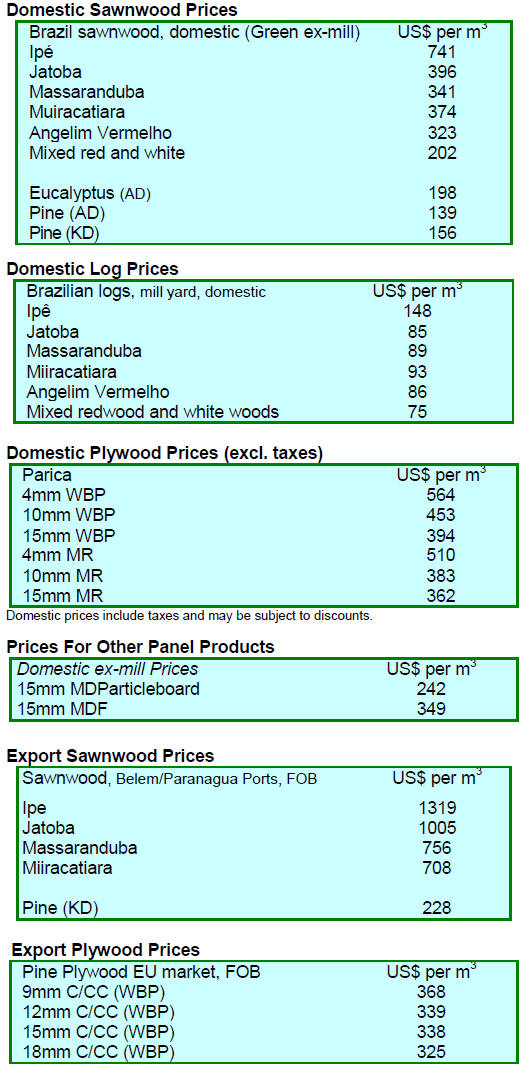

8. PERU
First export of plantation timber to US
Reforestadora Amaz¨®nica S.A.C. (RAMSA) recently
shipped to the US a consignment of plantation grown
bolaina (Guazuma crinita) and Capirona (Calycophyllum
sp.).
If this is a success the company aims to market these
species in Europe and Asia, according to Felipe Koechlin,
RAMSA General Manager.
He stressed that the company was encouraged to enter the
plantation business after the government recognised the
potential of the plantation sector and introduced Decree
No. 017 (Promotion System Forest Plantations on private
land).
The company, which is FSC certified, manages 14,000
hectares and has around 4,000 hectares of native bolaina
and capirona. RAMSA recently exported products
manufactured from eight year old plantation logs.
Satellites help fight deforestation
A geospatial system, linked to satellites will enable realtime
monitoring land use and relief of forests and help
three state agencies in efforts to combat illegal logging and
deforestation in the Ucayali region.
This is the first satellite monitoring unit to assess
deforestation and illegal logging in Pucallpa and was
possible through support from the US Agency for
International Development (USAID) through the Initiative
for Conservation in the Andean Amazon (ICAA).
Initial trials will focus on the Ucayali region as it has the
second largest forest area (more than nine million
hectares) and a high rate of deforestation.
Manufacturing output continues to slide
Cesar Peñaranda, Executive Director of the Institute of
Economics and Business Development (IEDEP) within the
Lima Chamber of Commerce expressed concern on the
1.4% projected decline in first quarter manufacturing
output. He noted that slowing domestic consumption and
weaker export demand is having a negative impact on
production.
This decline is of concern as manufacturing is the second
most important activity after services and contributes
around 16% to GDP. The current weaker manufacturing
output comes on top of the 10 consecutive monthly falls
since May 2014.
For more see:
http://www.camaralima.org.pe/principal/noticias/noticia/se
ctor-manufactura-caeria-1-4-en-primer-trimestre-delpresente-
ano/326

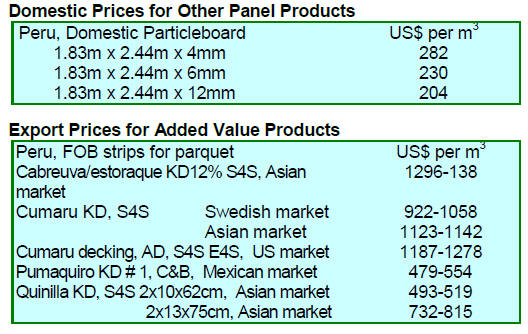
9.
GUYANA
Over the past two weeks the news from Guyana
has been
dominated by the general election. The results of the vote
have been released showing the opposition coalition has
won a majority.
The Partnership for National Unity and Alliance for
Change coalition led by David Granger won a majority
and will form the new government.
Export prices
There were no exports of greenheart logs but exports of
purpleheart and mora logs continued.
